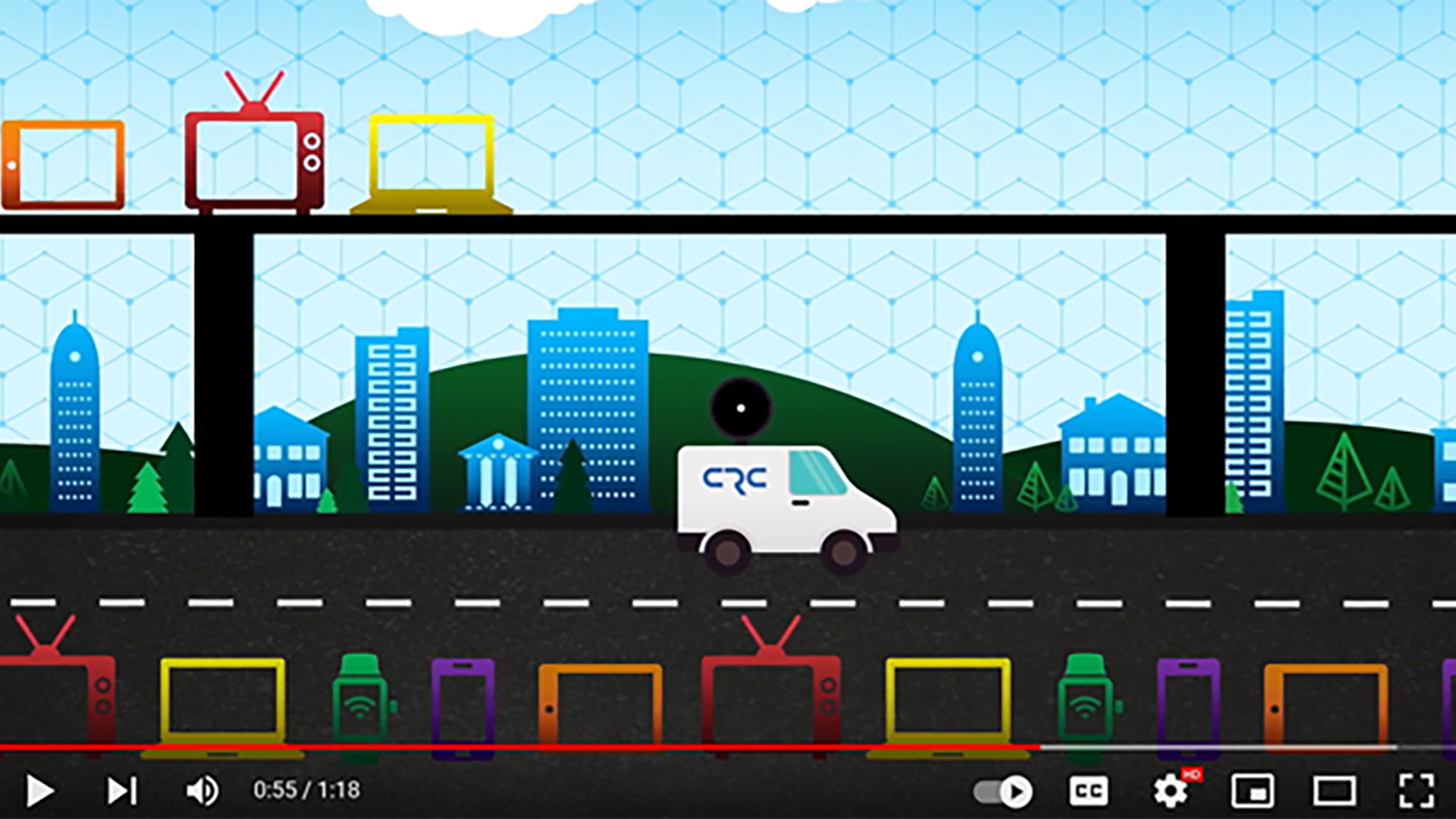Our lives are more virtual than ever. Whether it is meetings hosted on a Microsoft Teams platform, online schooling or a Zoom fitness or music class, the COVID-19 pandemic forced all of us into a virtual world that provided both new opportunities and exposed many challenges.
Just think back to when you tried to book a vaccination appointment online and the website crashed. or when a Zoom call froze in the middle of an important work meeting. There is no doubt the pandemic highlighted the importance of reliable digital networks and platforms. It’s no longer a luxury; it is now critical infrastructure connecting the country, akin to roads, bridges, and railways. These days all this is referred ‘table stakes.’
Meeting the demands of an increasingly interconnected world is becoming a global priority. It enables us to work from home safely, stay safe on rural roads, access education and upskilling resources at home, adopt technology on farms, ranches, and rural areas, connect to social services, and stay connected with loved ones.
Governments, businesses, and everyday citizens are realizing up-to-date technology and high-speed internet are imperative if we want to remain competitive and grow the economy. However, nearly two years after the onset of the pandemic, two million Canadians still do not have access to stable and reliable internet – with Indigenous, low-income, rural, and newcomer communities disproportionately impacted.
Only 48% of rural communities have access to broadband speeds that allow multiple people to use the internet at the same time, stream videos, etc. – compared to 76% of the residents living in cities.
Better connectivity means businesses can become more competitive by improving nearly every aspect of their organization’s processes. Some examples of competitive advantages are:
- improved communication between employees, especially with remote work
- automation of tasks potentially reducing costs and increasing efficiency
- improved customer experience when viewing and ordering products or services
- marketing to a global customer base not just a local one
Government and industry both have a role to play in ensuring all Canadians have access to the resources they need to stay connected and competitive. This means updating Canada’s infrastructure – our schools, offices, apartment buildings, cell towers, stations and networks across the country.
More specifically, it means building capacity to deliver 5G service - the newest generation of networks. 5G is faster, with more bandwidth, and will allow billions of devices to connect, which is critical for the smart cities we are building. Canada’s economy stands to gain an additional $150 billion (USD) in value by implementing 5G networks by 2040.
Beyond the brick-and-mortar expansion that is needed, Canada also needs to ensure the rules and regulations that govern the digital world remain relevant and continue to connect Canadians.
Spectrum: the waves that connect us
In Canada, the federal government regulates something known as ‘spectrum’. Essentially, spectrum refers to the airwaves used to send wireless signals back and forth. For example, every time someone sends a text from a phone or uses the internet, wireless signals are transmitted along specific airwaves, across space, sending and receiving information.
Now apply this same concept to all the digital technologies we use today: phones, laptops, television, cars, radio, smart home devices and the list goes on and on. Every minute, billions of signals are sent and received by billions of users across the world.
Watch this video to for more on what spectrum is and how it works.
These invisible airwaves are not an unlimited resource. There is a limited range of frequencies that can be used for communications, and we can’t just create more spectrum. It’s similar to how only one radio station can hold and transmit sounds at 99.5 MHz.
When there is a lot of traffic, signals can bump into each other or result in traffic jams. To avoid this, governments regulate spectrum to keep traffic flowing. They hold spectrum auctions where companies bid to be able to use certain frequencies.
The most recent auction held in Canada generated almost $9 billion in revenue, doubling the world record. It shows how fierce the competition for spectrum is – especially if there isn’t enough spectrum to go around.
Wanted: fair and effective regulation of spectrum
The Government of Canada has made available the second lowest amount of the critical mid-band spectrum needed for 5G of any advanced country. Having spent $9 billion at auction, no Canadian provider has the internationally recognized standard for 5G. In fact, they each have less than half the necessary spectrum.
In the most recent auction, the Government of Canada set aside a portion of the available spectrum (757 of 1504 licenses) for new players in the market and small and regional providers. The idea is to boost competition in the telecommunications market and provide more competitive prices for Canadians.
While this is effective in theory, it comes with challenges. Small providers across the country often don’t have the resources to invest in the infrastructure expansion needed to deliver service using their share of the spectrum. This often leads to the airwaves being wasted or resold to larger companies. Some smaller carriers that do not have the necessary infrastructure simply buy access to networks from larger carriers at wholesale rates and resell to customers.
Policies must be designed to ensure assigned spectrum is in fact being used to deliver updated, competitive service to Canadians.
Rural communities are particularly affected because it costs far more to deliver high speed networks to rural areas compared to urban. The efficient use of spectrum is critical to expanding rural networks in Canada. Access to faster and more reliable internet allows rural citizens to grow their businesses, access government supports and attract talent.
Rural communities typically have more limited connectivity, and much older network infrastructure. If regular infrastructure investment and upgrades do not occur and spectrum is not fully optimized to serve rural communities, many Canadians and Canadian businesses will be without the tools needed to be competitive in the digital age. This hurts our overall competitiveness and economy because there are fewer Canadian seats at the world table.

Connecting Canadians with good policy
Governments can foster competition, while ensuring our valuable and limited airwaves are used to their full potential. The Calgary Chamber of Commerce has five recommendations to help Canada accomplish that goal:
Implement a “use it or lose it” policy for unused spectrum. If a company has not used its share after a certain number of years, it must be shared or revoked
Ensure operators have access to sufficient spectrum (as recommended by the International Telecommunications Union) to provide an internationally competitive 5G network.
To avoid companies from holding spectrum with the intention of selling it at a profit in secondary markets rather than developing infrastructure, prohibit the resale of spectrum at a higher price than that at which it was purchased.
Provide incentives that encourage investment to support building and expanding network infrastructure, including by developing targets and incentives for companies to provide high-speed and reliable rural service.
With so many countries racing to implement 5G, Canada’s policies and regulations need to ensure we remain competitive in the global market while building new connections for Canadians.
Government and industry have important roles to play – and changes to make – to secure a strong position for Canada in the connected global economy of the future.






